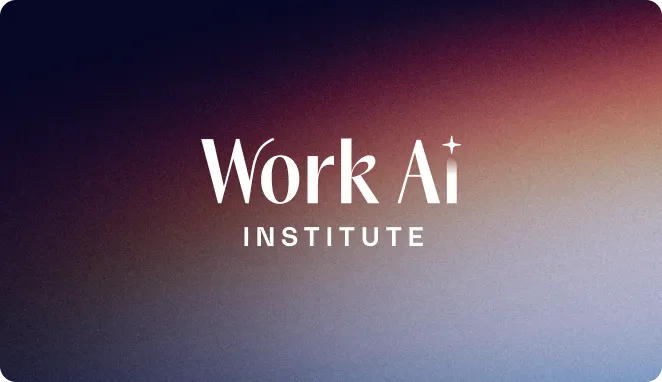- The integration of AI in software engineering necessitates a balance between enhanced automation and essential human oversight to maintain code quality and governance, as AI can inadvertently introduce inefficiencies and errors.
- Rethinking talent strategies for the AI era is crucial, with an emphasis on fostering adaptability and problem-solving skills in engineers, while also promoting full-stack generalists to enhance AI implementation across development processes.
- To effectively measure productivity in AI-augmented environments, organizations should focus on established industry metrics that correlate to meaningful business outcomes rather than simplistic measures like lines of code, ensuring alignment between AI initiatives and strategic objectives.
Staying competitive in a demanding tech landscape requires not only a strong and adaptable product but also the engineering talent that builds, maintains, and evolves it. To empower software engineering teams to scale efficiently and tackle new challenges, businesses must rethink how those teams enable them to do more and better with less.
Artificial Intelligence (AI) has become a fundamental force shaping how teams create, collaborate, and innovate. As AI-driven tools become deeply embedded in the development lifecycle, engineering leaders face new challenges: balancing automation with human oversight, adapting talent strategies, and redefining productivity metrics.
AI can reduce development time and allow engineers to focus on higher-level problem-solving. It can also help minimise common coding errors, improving software reliability and maintainability. AI can also assist less experienced developers by bridging gaps in their programming knowledge.
But these benefits also come with challenges. For example, AI-generated code may not always follow best practices, leading to inefficiencies, security vulnerabilities, or unintended behaviours. AI models don’t always explain why they generate specific outputs, making debugging harder, while sometimes misunderstanding business logic, project architecture, or nuanced requirements. That’s why human oversight is essential to ensure alignment with the broader system and organisation.
In a recent roundtable discussion that I hosted in partnership with the Executive Leaders Network, I spoke with other software engineering leaders and explored the implications of AI. We offered insights into how organisations can harness AI effectively while maintaining the value of human-driven decision-making.
The role of AI in software engineering: a balancing act
According to GitHub, developers spend 75% of their time on non-coding tasks. This statistic underscores a long-standing challenge in the software engineering domain—optimizing workflows so engineers can focus on high-value problem-solving rather than administrative overhead.
During the roundtable, attendees shared their experiences with AI-powered tools, discussing the benefits and complexities of measuring productivity gains. For example, one technology leader from an international investment bank elaborated on their experience of rolling out AI-supported coding to thousands of engineers, emphasising the need to justify ROI while ensuring that AI augments human capabilities rather than replaces them. Others echoed this sentiment, highlighting the need for continuous human oversight in AI-assisted coding to maintain code quality and governance.
Rethinking talent strategies for the AI era
Another conversation revolved around talent management and the evolving skill set required in modern software engineering. The concept of the ‘skills half-life’ emerged as a concern—technical expertise is becoming obsolete faster than ever, requiring software engineers to adapt constantly. This also necessitates continuous skills development, along with the associated costs.
Some leaders shared their strategies for hiring and retaining talent in an AI-enabled world, emphasising problem-solving abilities and adaptability over several years of experience with specific tools. One engineering director expressed the difficulty of balancing deep technical expertise with the ability to learn and evolve—something that is very difficult to write into a job specification, because it is as much about future potential as prior experience.
Another recurring theme was the value of full-stack generalists - engineers with a holistic understanding of the software development ecosystem - who can seamlessly integrate AI into their workflows. Moreover, participants underscored the importance of maintaining a mix of senior and junior talent to maximise AI’s potential in different contexts, ensuring diverse perspectives in technical decision-making.
Structuring engineering teams with AI in mind
The discussion shifted to how software engineering teams should be structured when incorporating AI. One of my guests proposed that engineering teams should be complemented by AI programming assistants, rather than entirely shifting to AI-driven development.
This led to broader conversations around governance, ethical considerations, and the importance of human values in AI development. One attendee noted that before embedding ethics into AI models, teams must establish clear ethical guidelines within their organisations – for example, how personal data is handled and what constitutes fair and legitimate use.
AI is increasingly influencing other aspects of the software development lifecycle beyond coding, including requirements gathering, testing, and deployment automation. This holistic approach requires engineering leaders to rethink how responsibilities are divided between human expertise and AI-generated efficiencies—each has something valuable to offer and it is the role of leaders to maximise the delivery of that value.
Measuring productivity in an AI-augmented world
One of the debated topics in the session was how organisations should measure productivity in the context of AI. Simplistic methods—such as counting lines of code—were criticised as poor indicators of meaningful output. Instead, our leaders advocated using established industry metrics like DORA, which focus on broader team performance rather than isolated developer output.
The consensus was clear: productivity measurement must be tied to tangible business outcomes. AI-driven efficiencies are only valuable if they significantly improve software quality, delivery timelines, and end-user experience. One attendee pointed out that executive leadership teams are often primarily concerned with timely delivery rather than the specific processes used to achieve it, reinforcing the need for strategic alignment between AI initiatives and business goals.
Practical applications of AI in software engineering
The discussion closed with actionable insights on where AI can be most effectively applied in software engineering. I outlined four key areas: onboarding new developers, maintaining developer flow, resolving production issues, and answering technical questions.
AI’s ability to automatically document code in natural language can streamline the onboarding process for new team members, reducing ramp-up time and ensuring continuity in knowledge capture and transfer. Meanwhile, AI-powered search and knowledge extraction tools within Integrated Development Environments (IDEs) can help developers stay in a flow state by surfacing relevant information instantly and as needed, as well as answering questions from other stakeholders.
The future of AI in engineering leadership
As software engineering evolves alongside AI, leaders must navigate a delicate balance—leveraging automation while preserving the human ingenuity and creativity that drives innovation. Our conversation highlighted that AI is an enabler, not a replacement for talented software engineers, and the most effective leaders will be those who blend technical foresight with ethical and strategic leadership.
In my view, the road ahead is not just about mastering AI tools but also about reshaping software engineering cultures to embrace AI as a collaborative force rather than a disruptive threat.
To find out more about Glean and how we can help you put AI to work, get a free demo today or watch the AI-powered engineering webinar.







%20(1).webp)

